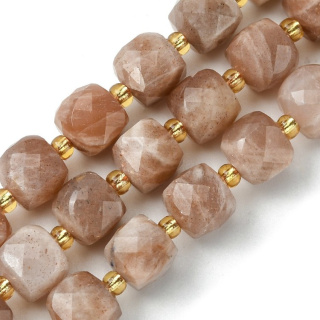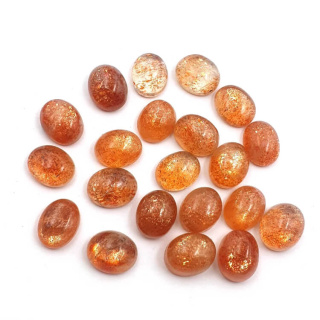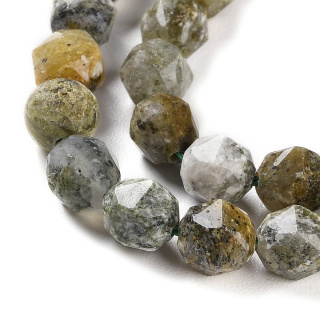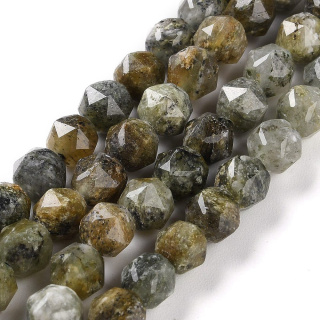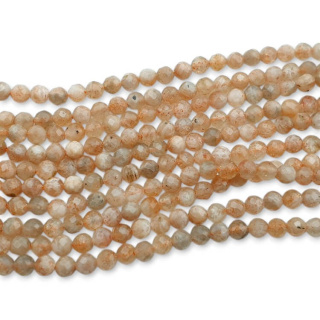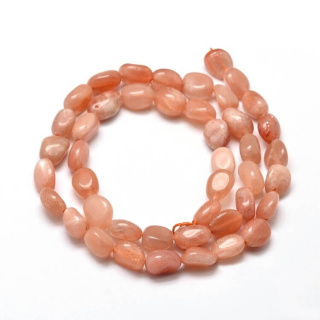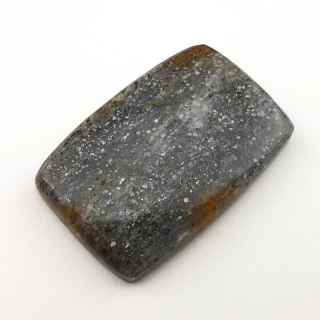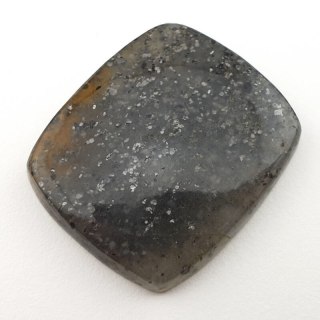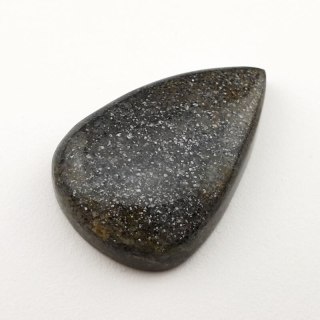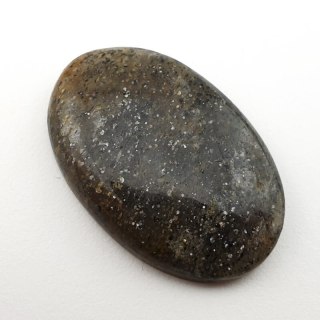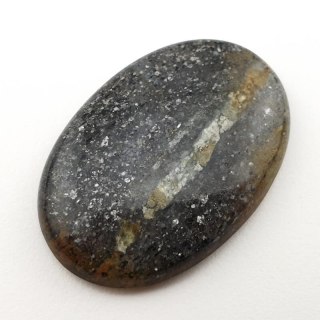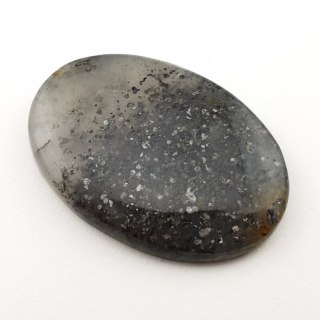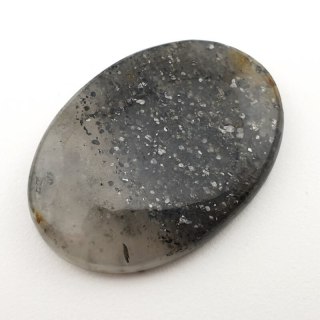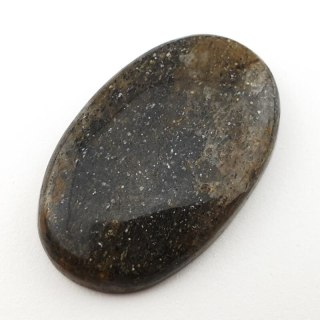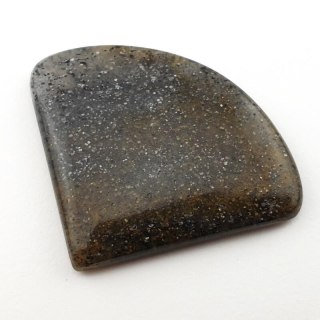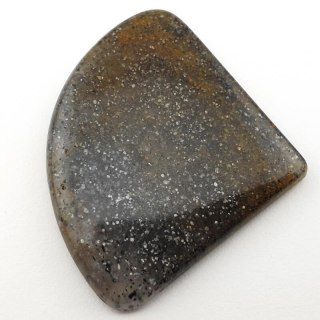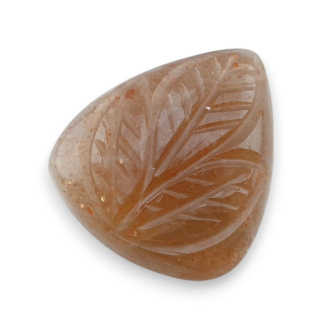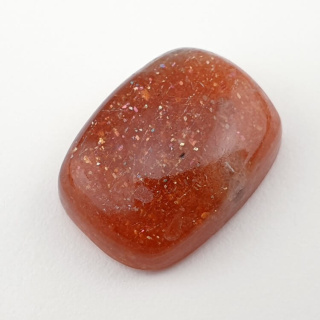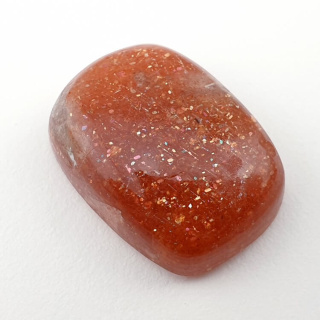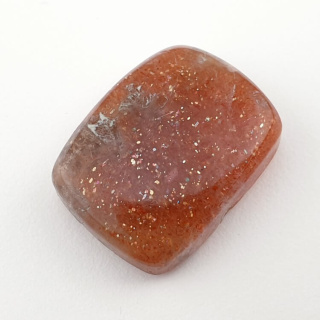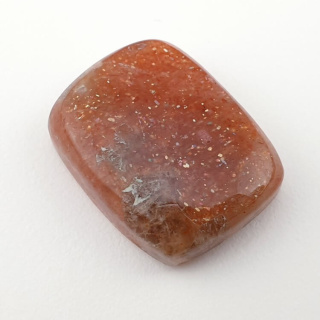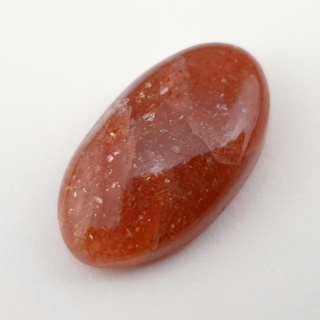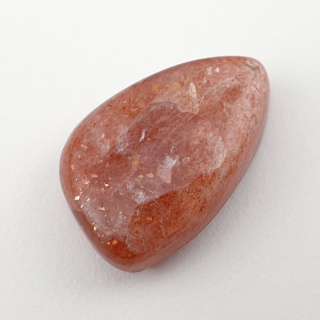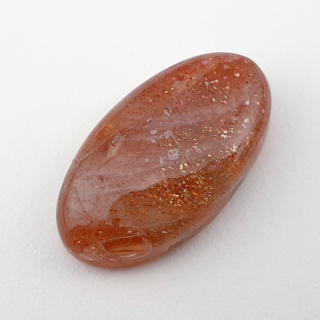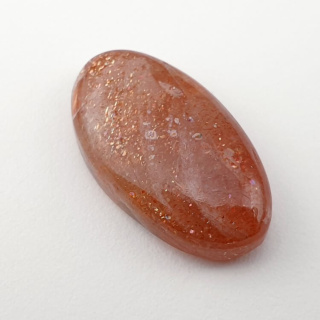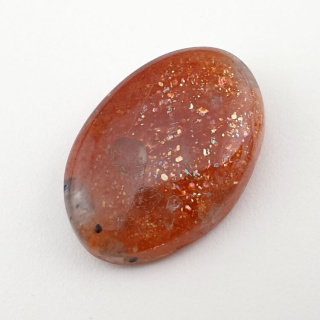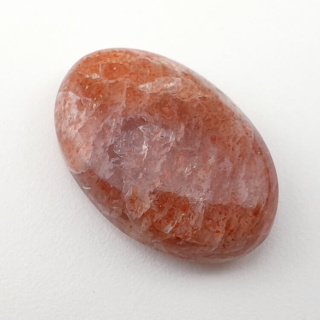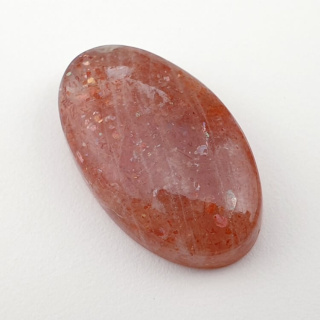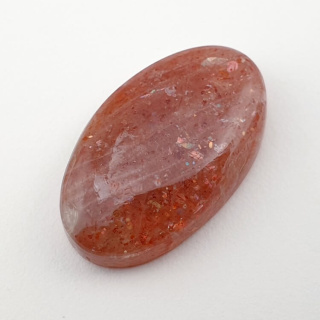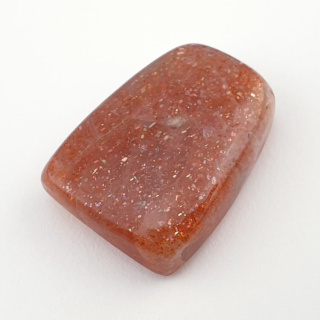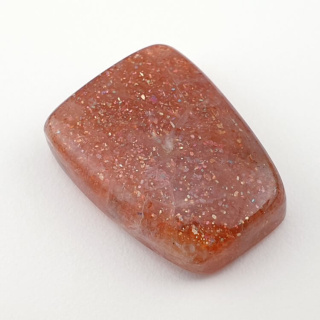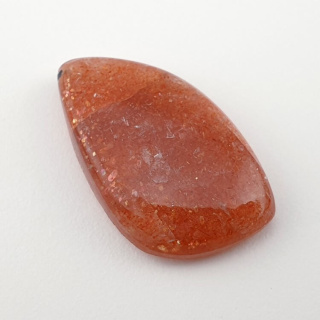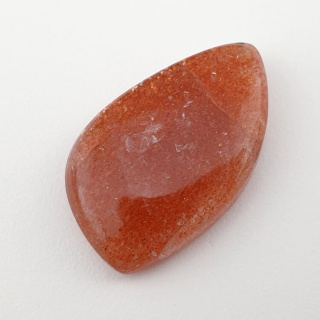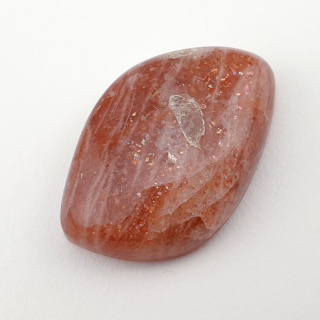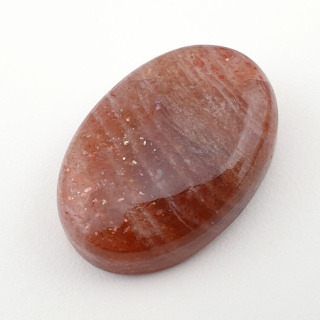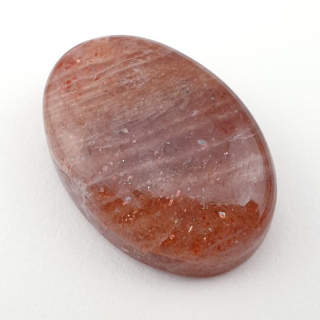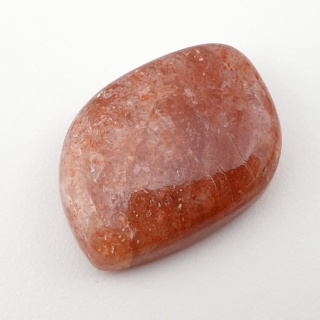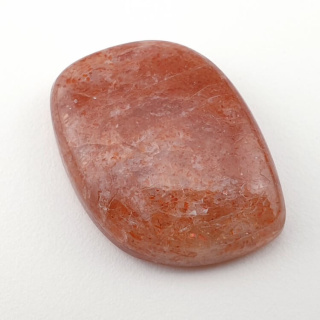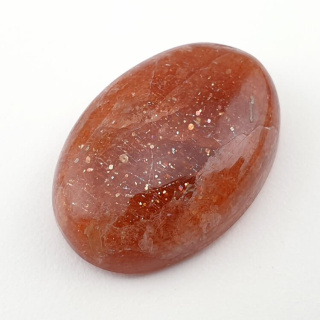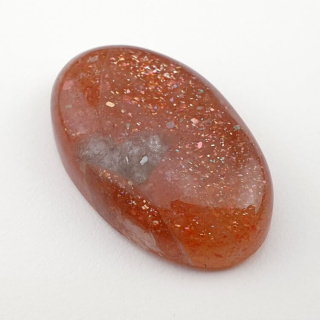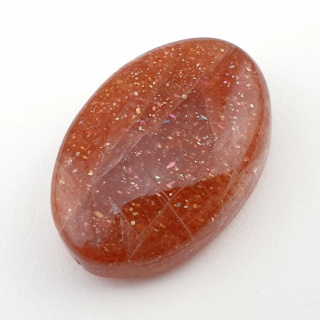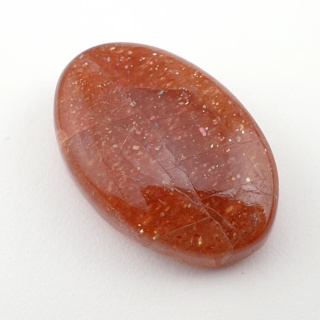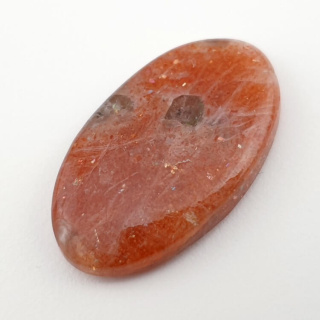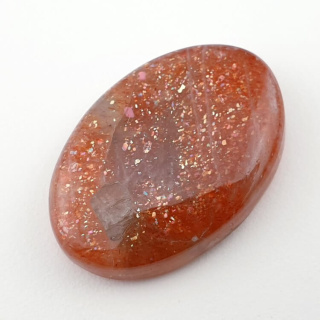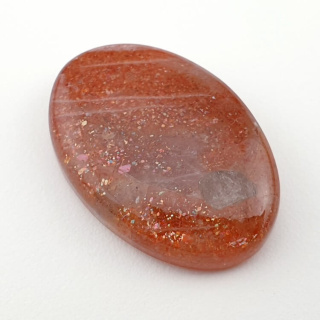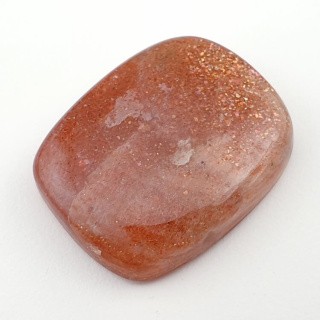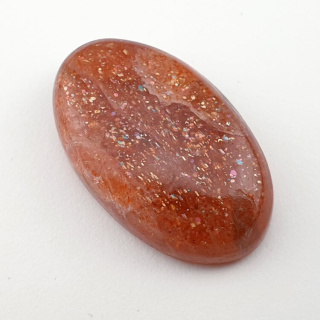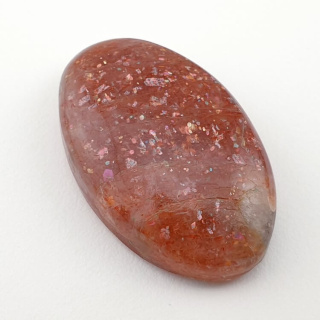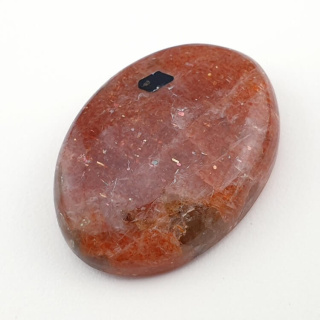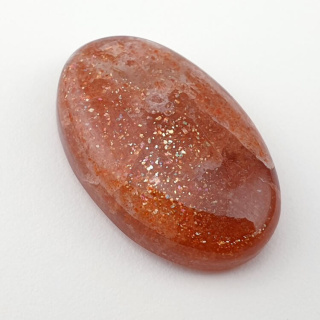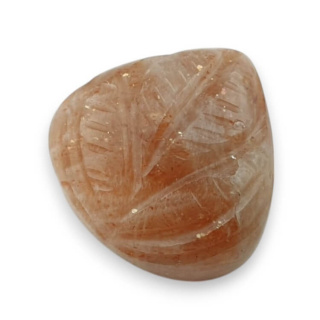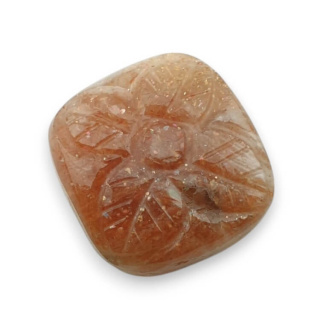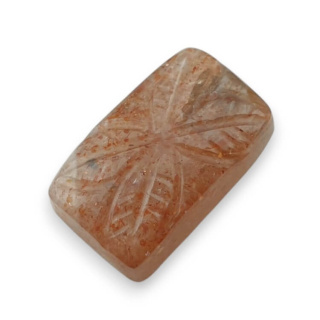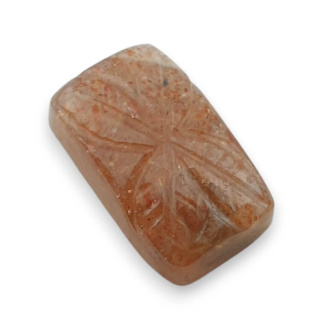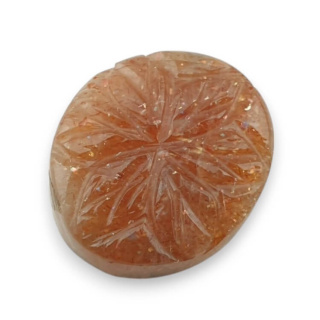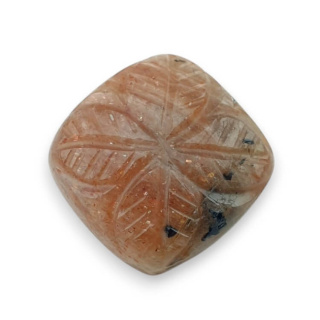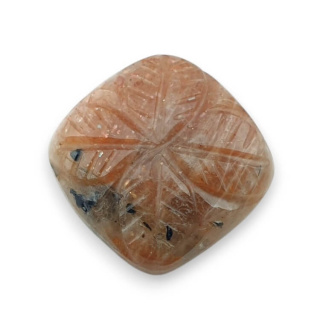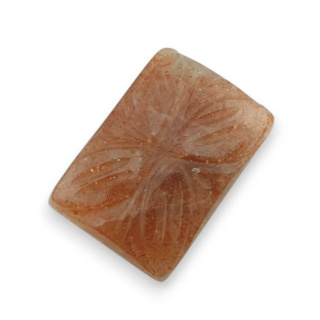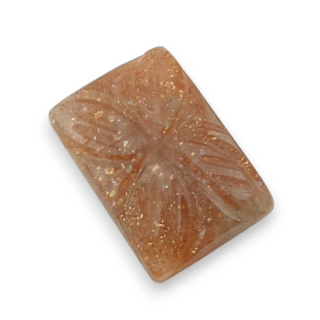Sunstone in shades ranging from orange-brown to gold and black
Number of products : 100What is a sunstone?
Sunstone is a type of mineral that is often used in jewelry because of its attractive optical properties. Sunstones come in a variety of colors, but are most commonly associated with shades of orange, red, brown, and gold. They are characterized by a beautiful, shimmering effect that is the result of a phenomenon known as “adularescence.” This is an optical effect in which light is scattered by microscopic inclusions inside the stone. They are prized for their unique play of color and optical effect, which makes them appear to sparkle or shimmer in the light. These stones are popular in jewelry art, both in their raw, precious stone form and as cut gems.
Origin of sunstone
Sunstones are minerals that are formed as a result of geological processes. They are feldspars, mainly orthoclase, which contain inclusions of minerals such as hematite, goethite, pyrite, and ilmenite. These inclusions create the adularescence effect that is characteristic of sunstones. Here is some information about the formation and occurrence of sunstones:
- Formation: Sunstones are formed as a result of magmatic and metamorphic processes. The most important thing is that during the formation of sunstone in basalt or granite rocks, cooling and crystallization occur, creating ideal conditions for the inclusion of minerals that later generate the adularian effect.
- Locations: Sunstones are relatively rare and occur mainly in specific regions of the world. The most famous locations for sunstone mining are:
-
Norway: Sunstones are sometimes called “adularia” and are known from a mountainous region in Norway.
-
India: Sunstones are also mined in India, especially in the state of Orissa.
-
Tanzania: Another important location is Tanzania, where sunstones of various colors are found, including those with a beautiful orange hue.
-
USA: Sunstones can be found in some states, such as Oregon and Texas.
- Australia: Sunstones are also found in Australia and New Zealand.
-
It is worth noting that sunstones vary in color, shade, and clarity depending on where they are found. The mining and processing methods also play a role, as they can affect the quality and attractiveness of the stone.
What colors can sunstones have?
The warm colors of sunstone are its hallmark. However, depending on where it is found and the type of mineral inclusions, many different colors and effects can be found. Here are some of the most important colors that can be found in sunstones:
- Orange: Orange sunstones are the most distinctive. Their shade can range from light orange to intense red.
- Red: Red sunstones are highly sought after. They can range in shade from pink to deep red.
- Brown: Some sunstones have a brown hue, which can be very attractive.
- Yellow: Sunstones with yellow hues are less common but also available.
- Gold: Golden sunstones are a popular choice in jewelry.
- Colorless: Although sunstones often exhibit an adularescence effect, some are completely colorless and only display optical effects.
- Other shades: Depending on the specific combination of inclusion minerals and geological conditions, sunstones can exhibit various unusual shades, such as green, purple, or even black.
It is worth noting that sunstones are known for their adularescence, which is a shimmering or iridescent effect that can be seen when the stone is rotated in the light. This effect makes sunstones appear to sparkle or shimmer depending on the angle of the light, regardless of their basic color. This is one of the characteristics that makes sunstones so attractive in jewelry.
What are the known types of sunstones and what are their unique characteristics?
Sunstones come in a variety of types and varieties, each with its own unique characteristics. Here are a few of them:
- Adularia: This is the most well-known type of sunstone. Adularia is basically a variety of orthoclase, a potassium feldspar that contains inclusions of minerals such as hematite or goethite. Its unique feature is the adularian effect, which makes the stone shimmer in the light.
- Oligoclase: This is a variety of plagioclase, a feldspar mineral, which can also exhibit the adularization effect. Sunstones made from oligoclase often display a variety of shades ranging from yellow and orange to brown.
- Heliolite: This type of sunstone is named after the word “heliolatry,” which means sun worship. Heliolite is a red sunstone with an intense red hue.
- Oregon Sunstone: This is a variety of sunstone found in the state of Oregon in the US. It is characterized by shades ranging from orange to red, as well as an adularescence effect.
- Tanzanite Sunstone: These are sunstones found in Tanzania that combine the properties of sunstone with tanzanite, resulting in a purple shimmering effect.
- Andradite: A variety of sunstone containing andradite, a mineral from the garnet group. These stones are greenish or yellowish and exhibit adularescence.
- Oregon Copper Sunstone: This is a rare type of sunstone that contains copper inclusions, giving it a bluish-green hue.
Each type of sunstone has its own unique characteristics, including color, optical effects, and location. The choice depends on the preferences of the jeweler and the customer, as well as the desired aesthetic properties and significance of the stone.
What are the most important properties of sunstone that influence its appeal in jewelry?
Sunstones are prized in jewelry for their unique properties that influence their appeal. Here are the most important properties of sunstone that influence its value and popularity in jewelry:
- Adularescence effect: This is one of the most important characteristics of sunstone. The adularescence effect is a shimmering light effect that occurs as a result of light scattering on inclusions inside the stone. This effect makes sunstones appear to shimmer or sparkle, giving them a unique charm.
- Color: Color is a key factor in the attractiveness of sunstone. Sunstone colors include orange, red, brown, yellow, gold, and other similar shades. An intense, beautiful color is always more highly valued.
- Clarity: The clarity of a sunstone refers to the degree of transparency and the absence of inclusions (impurities) or air bubbles inside the stone. Sunstones with greater clarity are more highly valued.
- Uniformity of the adularian effect: A uniform and even adularian effect makes the stone more attractive. The value may decrease if the effect is uneven or poorly visible.
- Size and carat weight: The size of the stone is important in jewelry, with larger stones generally being more valuable. Sunstones come in a variety of sizes, and their value is often expressed in carat weight.
- Setting and cutting: Choosing the right cut and setting can significantly affect the appearance and appeal of a sunstone. Cutting is important for optimizing the adularescence effect, while the setting can enhance its beauty.
- Hardness and durability: Sunstones are relatively soft compared to some other gemstones, so it is important that they are hardened and stored properly to maintain their durability.
- Rarity and location: Sunstones are rare and found mainly in specific locations around the world, which adds to their collectible value.
It is worth noting that the value of a sunstone can also be influenced by trends in jewelry and individual customer preferences. Each sunstone is slightly different, making the choice a personal one.
What is adularescence, and why is it important in the context of sunstone?
Adularization is an optical effect that is characteristic of sunstones and many other minerals, especially feldspars. It is a phenomenon in which light is scattered or refracted by inclusions within the stone, creating a shimmering light effect. The adularescence effect makes sunstones appear to shimmer or sparkle, which is one of the most important characteristics of sunstone.
- Aesthetics: The adularescence effect gives sunstones their unique charm and visual appeal. It is the shimmering or sparkling of the stone at different angles of light that makes it so attractive in jewelry.
- Recognizability: The adularescence effect is one of the main characteristics that allow sunstone to be identified. This, combined with other characteristics, allows jewelers and collectors to recognize sunstone and distinguish it from other minerals.
- Value: Sunstones with an intense and uniform adularescence effect are generally more valuable than those with a weak or uneven effect. The adularescence effect is one of the key factors influencing the price of a sunstone.
- Uniqueness: Adularescence is a feature found only in sunstones and some other minerals. This makes these stones unique and prized by collectors.
The adularian effect is related to mineral inclusions, such as hematite or goethite, in the structure of sunstone. These inclusions create conditions for light scattering, which in turn generates a shimmering effect. For many people, it is this shimmer that makes sunstones so fascinating and beautiful.p>
What are the methods for cleaning sunstone to preserve its beauty and luster? h2>
Cleaning sunstone is important to preserve its beauty and luster. Here are some cleaning methods and general care tips for sunstones:
- Gentle washing: Sunstones can be cleaned by soaking them for a short time in lukewarm water with mild soap or dish detergent. Then gently scrub them with a soft brush (e.g., a toothbrush) or a soft cloth to remove dirt and impurities. Avoid using hard or abrasive cleaning agents that could scratch the stones.
- Avoid contact with aggressive substances: Avoid contact between sun stones and aggressive substances such as acids, alcohol, ammonia, or chlorine. These substances can damage the stones and dull their surface.
- Dry cleaning: You can also wipe the sunstone with a dry, soft cloth or microfiber to remove fingerprints or light dirt.
- Avoid impact and collision: Sunstones can be relatively soft, so avoid hitting or colliding them with hard objects that could cause scratches or damage.
- Proper storage: Store sunstones separately from other jewelry to avoid scratches and damage. You can use special containers or cloths to store the stones.
- Periodic jewelry checks: Check your jewelry with sunstones regularly to ensure that any breaks or loose stones are repaired immediately by a jeweler.
- Avoid extreme conditions: Sunstones can be sensitive to extreme temperatures and sunlight, so try to avoid prolonged exposure to extreme conditions.
- Regular polishing: If necessary, professional polishing can be carried out by a jeweler to restore the shine and luster of sunstones.
Keep in mind that the care of sunstones may vary depending on the type of metal used in the jewelry and other stones that may be present in the design.
What magical properties and esoteric uses does sunstone have?
Sunstone has a long history of magical properties and esotericism, and is considered a stone with many positive energetic properties. Below are some of the magical properties and uses of sunstone in esotericism:
- Stone of optimism and joy: Sunstone is often associated with optimism, joy, and positive thinking. It is believed that wearing or holding this stone can help improve mood and lift spirits.
- Strengthening vital energy: Sunstone is considered a stone that strengthens vital energy and helps increase physical and mental vitality.
- Increasing self-confidence: In esotericism, sunstone is believed to help increase self-confidence, self-assurance, and self-acceptance. It is used as a support stone for those who want to strengthen their inner strength.
- Balance and harmony: Sunstone is often used to restore balance and harmony in life. It helps to cope with stress, negative emotions, and tension.
- Spiritual development and growth: In esotericism, sunstone aids in spiritual development, meditation, and spiritual quests.
- Protection and energy cleansing: Sunstone is often used as a protective stone against negative energies and influences. It can help cleanse the aura and attract positive energy.
- Leadership stone: Some believe that wearing sunstone supports the development of leadership and management skills.
- Creativity stone: The sunny energy of Sunstone is associated with creativity and ingenuity. It can help trigger creative thoughts and ideas.
It is always worth remembering that gemstones are often used in esoteric practices as tools for meditation, energy healing, and spiritual development. Their effects can be subjective and depend on the beliefs and intentions of the person working with them.
![[{[item.product.name]}]]([{[item.product.photo.url]}] 75w)




